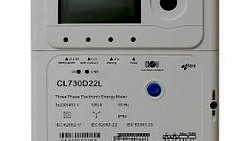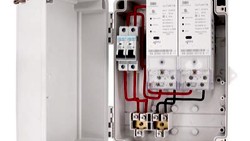Last weekend, as I meticulously prepared the layers of my Schwarzwälder Kirsch cake, a task where timing is not as crucial as the ingredients themselves, the iconic ticking from the opening of Pink Floyd's "Time" began to fill my kitchen. The synchronicity of the moment wasn't lost on me; timing truly is a universal pulse, a beat to which we all march – in life, in baking, and notably, in the precise world of electrical metering.
Much like ensuring my cake doesn't overbake, the measurement of time in metering must be exact, with even the smallest discrepancies having the potential to impact energy consumption records and grid stability profoundly.
As the song played, it wasn't just a reminder of the fleeting nature of time, but also of its omnipresence in our work and daily lives, underpinning activities most take for granted. So, let us explore the rhythm of time in electrical metering and understand how this invisible conductor directs the symphony of our energy networks.
The Importance of Precise Timing
For electrical utilities, metering consumption at the endpoint is essential for functions like load profiling, billing, demand forecasting and diagnosing potential issues in the distribution system. These meters must capture usage volumes and peak demands at regular intervals, often every 15-60 minutes. To aggregate all this timely data in a meaningful way, all meters recording at different endpoints need to be perfectly aligned with a central time source at the moment each interval starts and ends. Otherwise, data becomes discordant, inaccurate load patterns emerge, and billing cycles get disrupted.
Precise timing acts as the backbone that allows consumption data recorded by millions of smart meters across vast service territories to be consolidated into a single synchronised view. Any discrepancies or drift in meters' time clocks compared to the master clock would accumulate errors and inconsistencies when reading interval data points that are only minutes or hours apart. Such integrity in time-stamping becomes exponentially more important as utilities deploy advanced operational technologies that rely on real-time energy data for functions like demand response, outage management and distribution automation.

(credit CLOU)
Maintaining Accurate Time
At the utility control center, Network Time Protocol (NTP) servers receive timing signals from highly precise GPS satellites or atomic clocks and synchronize the master time reference to Coordinated Universal Time (UTC). This time source is then disseminated to smart meters and other field endpoints through various networking methods. Cellular, PLC, RF mesh and other emerging wireless technologies aid in keeping meters' internal real-time clocks aligned within a few milliseconds of the utility's master clock at all times through periodic time synchronization messages.
While smart meters themselves feature internal oscillators and battery backups to sustain timing when momentarily disconnected, drifts as small as a few seconds per day can accumulate over months or years if left uncorrected. Frequent remote time syncs ensure clock deviations stay within strict thresholds mandated for retail electricity metering, often +/- 1 second or less of UTC. This level of accuracy is critical to associate interval data with the correct time periods for billing purposes as per regulatory guidelines. Additional functionality in some meter designs allows on-premise time synchronization using technologies like PTP for even tighter precisions down to microseconds in demanding applications.
PTP refers to the Precision Time Protocol, which is standardized as IEEE 1588. It's used for very accurate time synchronization over a computer network. In the case of electrical metering, PTP can be incorporated into smart meter designs to allow for on-premise time synchronization. This is particularly useful in applications where time-stamping of power usage data with high precision is crucial, such as in industrial settings or for grid management.
Overcoming Challenges through Cooperation
Of course, maintaining synchronized high-precision time across large deployments presents technical obstacles, especially in two-way wireless last-mile environments prone to signal losses and delays. Variability in communication infrastructure quality and occasional endpoint downtimes can disrupt real-time time synchronization. However, utilities and technology providers have engineered effective mitigation strategies through cooperative efforts. Self-healing mesh networking minimizes impact of intermittent connections, while intelligent NTP algorithms account for transmission lag and maintain stratum 1 server stratifications for backup holdover. Some smart meters also incorporate additional timing disciplines like PTP to minimize timing errors during outages.
As connectivity evolves through emerging technologies like narrowband IoT, LoRaWAN and 5G, opportunities will increase to strengthen the resilience of timing networks servicing millions of endpoints. Standardization of time synchronization protocols across vendor products through open platforms benefits the entire industry. Collaborations between utilities also explore creative approaches like leveraging common time sources accessible over wide-area backhaul links as an alternative to GPS. Such cooperation fosters continued optimization of timing accuracy and reliability essential for transparent operation of advanced grid systems in the years ahead.
Takeaway
Precise and trusted time-keeping forms the base on which electrical utilities carry out vital metering and other real-time functions reliably. By maintaining tight synchronization between field devices and the control center, high-fidelity energy transaction data can seamlessly flow to power operations and planning activities. As usage profiling granularity increases through smart meter deployments, accurate timestamping of interval recordings grows proportionately more important.
End-to-end time synchronization over interconnectivity platforms therefore remains an area primed for ongoing research and cooperation—to capitalize on opportunities created by the evolving grid edge and fulfill the promise of a digital energy future.
Thank you for reading. If you've got thoughts to share on the importance of synchronization in the energy sector or any questions, feel free to leave a comment below.
Until then, keep your circuits humming and your time precise. P.S. Fancy a delightful treat? Ask me for my Schwarzwälder Kirsch recipe!






All comments are moderated before being published. Inappropriate or off-topic comments may not be approved.